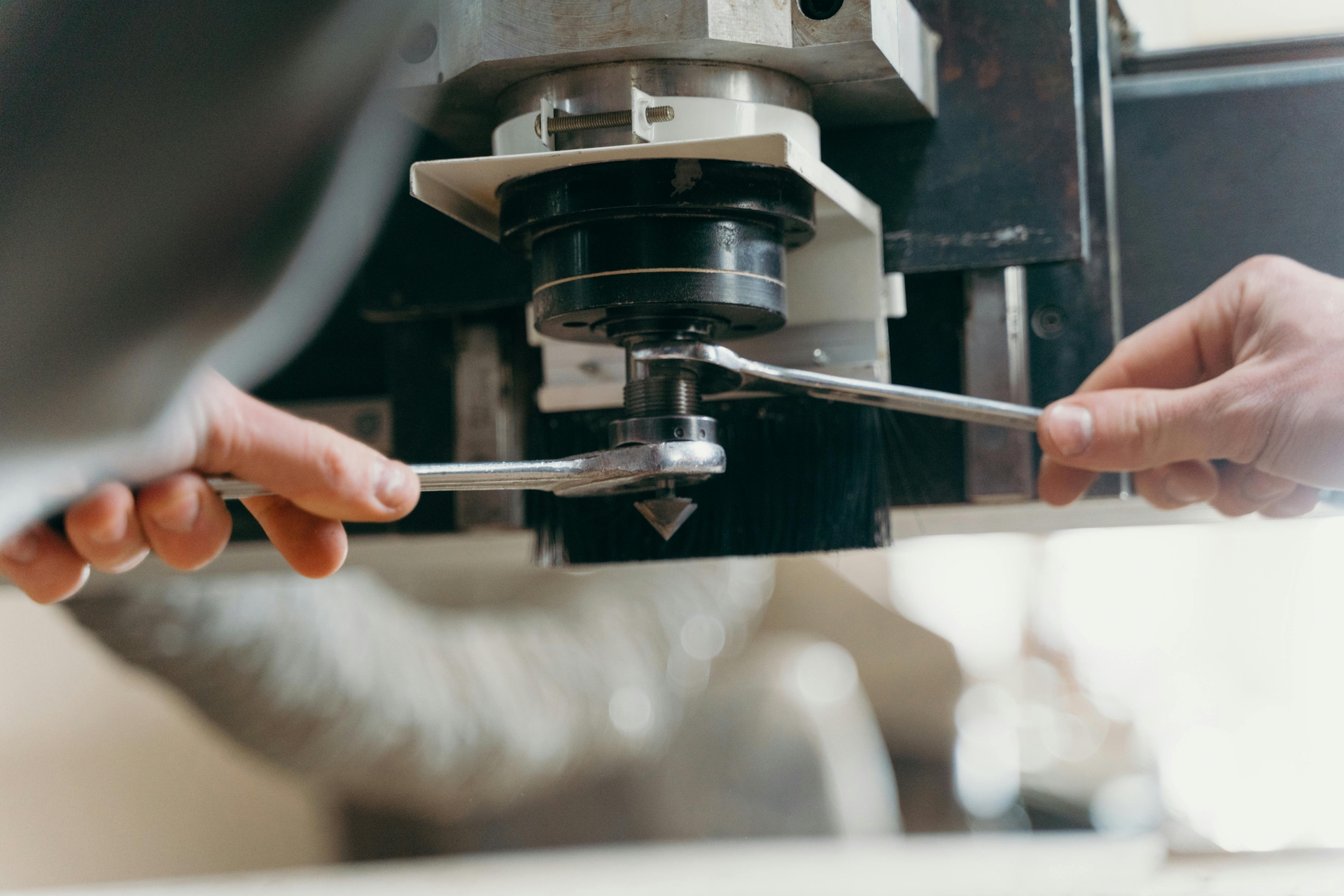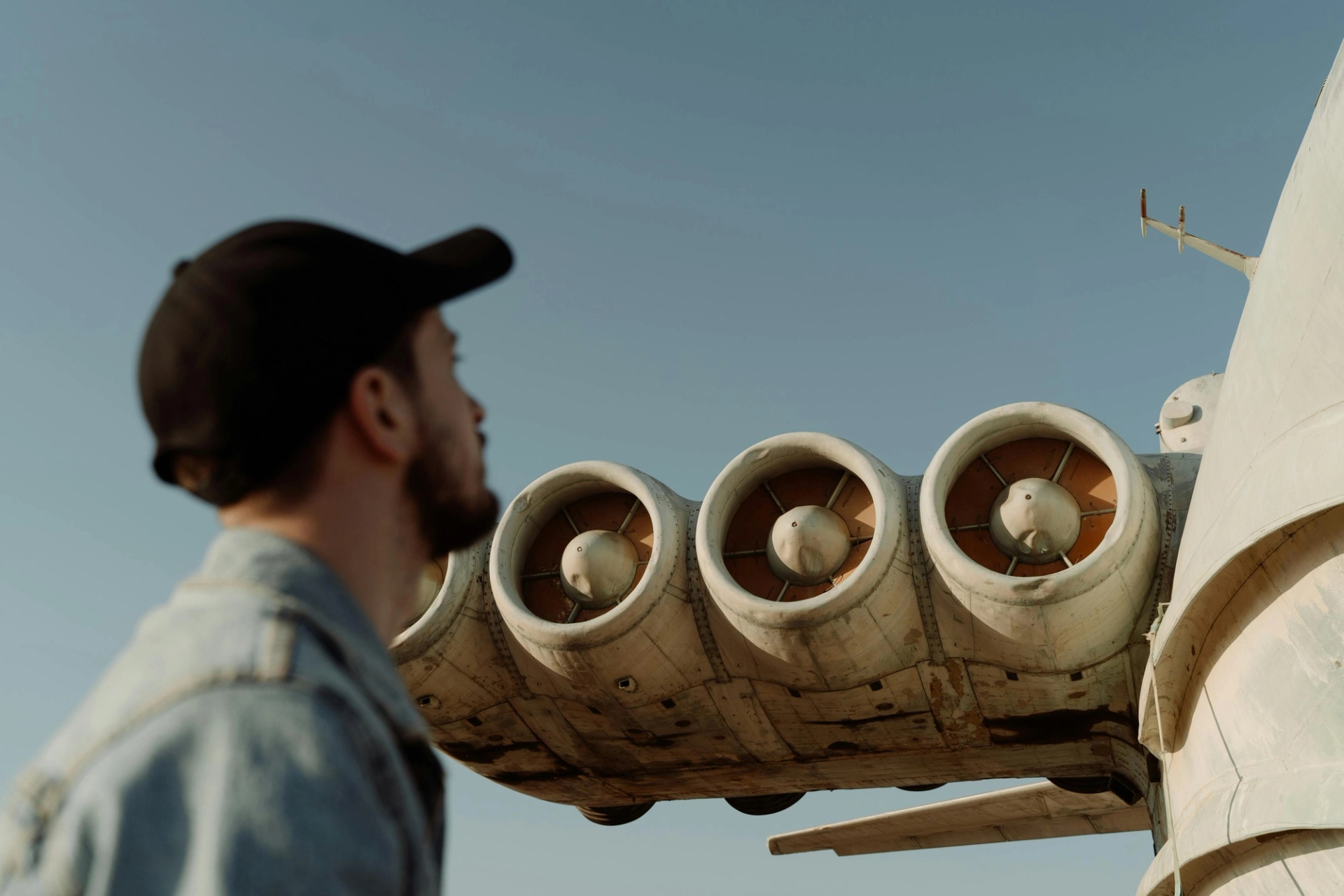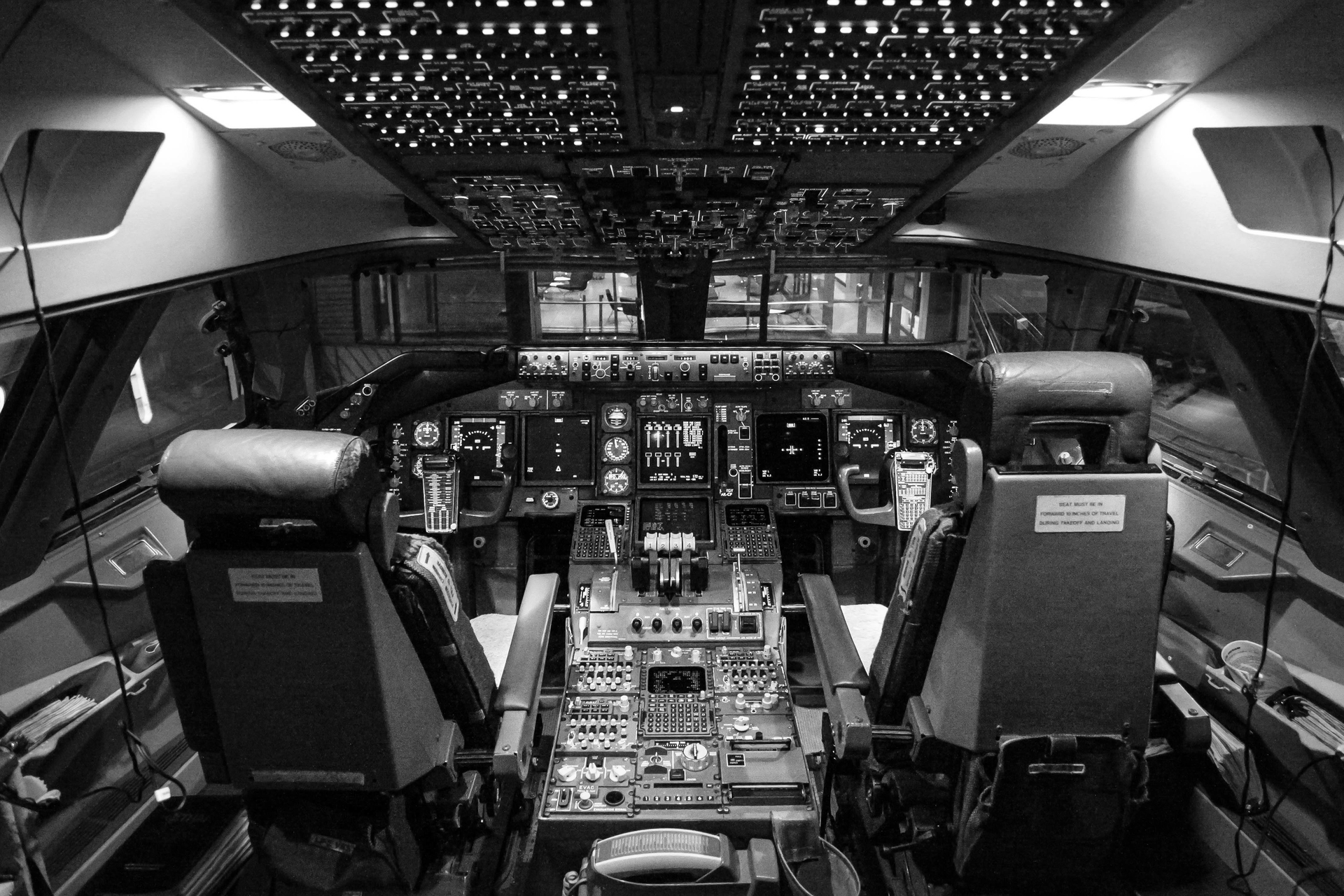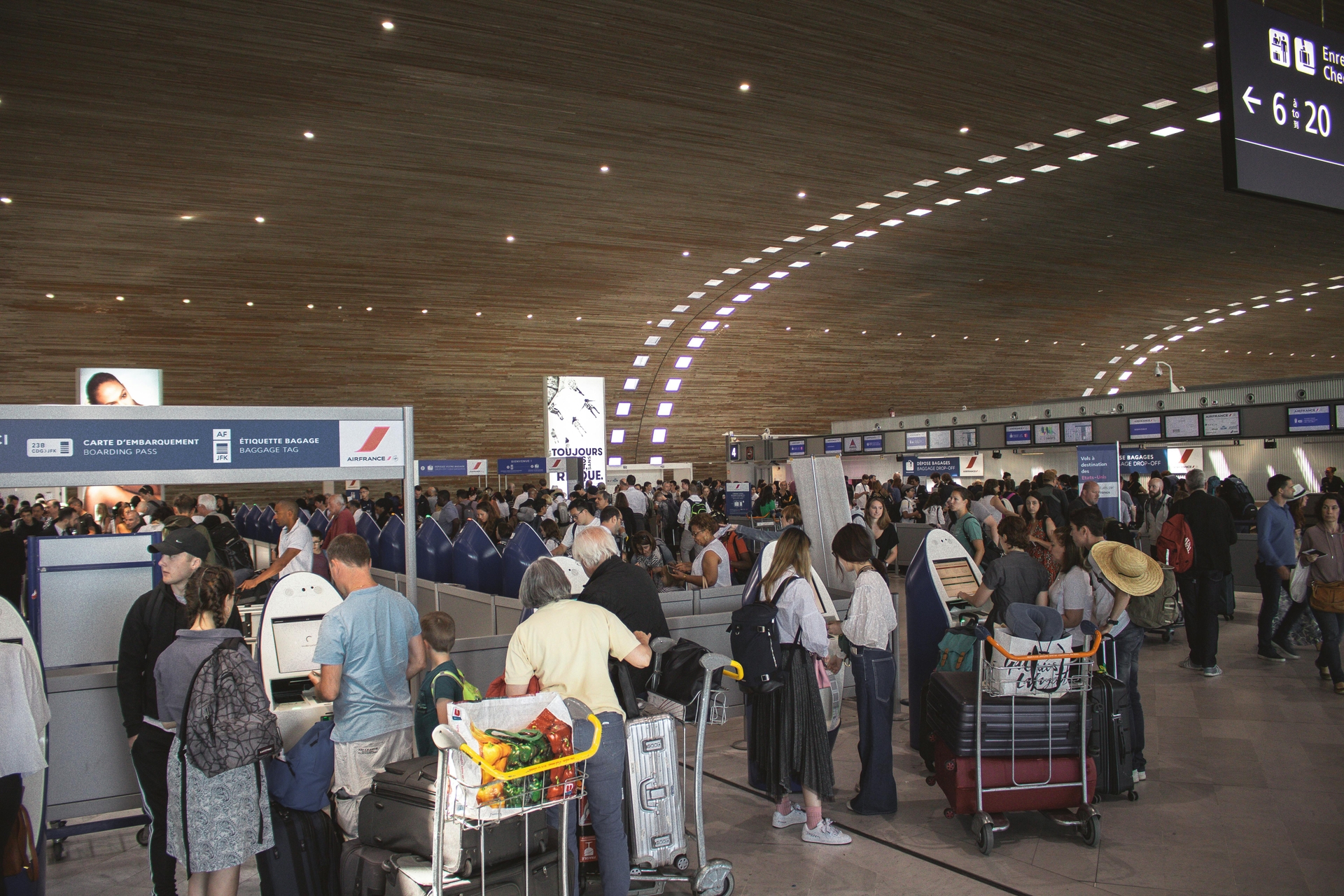
AeroGenie — Your Intelligent Copilot.
Here’s What You Need to Know About CNC Machining for Aerospace Parts
September 09, 2025
CNC machining is the backbone of aerospace innovation. From turbine blades to titanium alloys, here’s how precision machining is transforming flight safety, efficiency, and the future of aviation.
When it comes to aerospace manufacturing, there’s no room for error. Every nut, bolt, turbine blade, and wing spar must perform under extreme stress and temperature variations—in an industry where a micro-deviation may mean the difference between a smooth flight and catastrophic failure.
Computer Numerical Control (CNC) machining is the backbone of modern aerospace production. This technology combines automation, digital design, and multi-axis machining to produce aircraft parts that meet strict safety and performance standards.
Whether it’s structural components, intricate engine parts, or avionics housings, CNC machining has redefined what’s possible in aerospace engineering.
This article explores everything you need to know about CNC machining for aerospace parts: what it is, why it matters, how it’s used, and where the technology is heading.
What is CNC machining and why it matters for aerospace
At its core, CNC machining is a precision manufacturing process where computer-controlled machines cut, mill, drill, or grind raw material into finished parts based on pre-programmed instructions.
Unlike traditional machining, where skilled operators manually control cutting tools, CNC machining automates every movement of the tool path to achieve micrometer-level accuracy (Dassault Systèmes).
CNC machining encompasses a variety of processes, including:
- Milling: Removing material with rotating multi-point cutting tools.
- Turning: Spinning a workpiece while shaping it with cutting tools.
- Drilling: Creating high-precision holes of varying depths and diameters.
- Grinding and polishing: Achieving surface finishes that meet aerospace aerodynamic standards.
This versatility makes CNC machining indispensable in aerospace, where components must consistently meet tolerances as tight as ±0.0001 inches (Yijin Solution). To put that into perspective, that’s about one-fourth the thickness of a human hair.
The aerospace sector, valued at more than $800 billion globally (Deloitte) relies on CNC machining for precision and its ability to reduce waste, accelerate production cycles, and quickly adapt to new designs.
How CNC machining transformed the aerospace industry
CNC machining has revolutionized aerospace manufacturing. Before its adoption, many aircraft parts were shaped manually or with less precise machine tools, which often meant longer lead times, higher costs, and inconsistent quality.
Today, CNC machining enables repeatable, surgical precision at scale, allowing manufacturers to build parts that can withstand the most extreme of environments.
Some of the key ways CNC machining has transformed aerospace include:
- Precision and accuracy
Aerospace systems like turbine engines, landing gear, and avionics housings demand tolerances so strict that even microscopic deviations could compromise safety. CNC machining ensures exact precision. - Efficiency and productivity
Once programmed, CNC machines can operate continuously with minimal human intervention. Multi-axis CNC systems perform multiple operations in one setup, cutting down production cycles and downtime. - Complex part manufacturing
Aircraft rely on parts with complex geometries—lightweight yet strong designs that balance aerodynamics and fuel efficiency. CNC machining, especially 5-axis technology, makes it possible to carve out intricate turbine blades, airfoils, and engine casings that were once thought impossible to consistently produce. - Design flexibility and innovation
Paired with advanced CAD software, CNC machining allows engineers to rapidly prototype and iterate designs. This catapults innovation across the aerospace industry, supporting everything from lightweight composites to experimental propulsion systems.
Key applications of CNC machining in aerospace
CNC machining touches almost every aspect of an aircraft’s construction. From engines to interiors, it’s essential for creating both high-stress components and lightweight structural parts. Some of the most important applications include:
- Engine components
Turbine blades, compressor discs, fuel nozzles, and combustion chambers all require extreme precision and heat-resistant materials. These parts operate at temperatures exceeding 2,000°F while spinning at tens of thousands of RPMs (Yijin Solution). - Structural components
CNC machining is critical for manufacturing landing gear, wing spars, bulkheads, and fuselage frames. These components must balance strength with weight savings. Every 100 pounds reduced in an aircraft can save an annual 14,000 gallons of fuel (Yijin Solution). - Avionics and electrical housings
Navigation systems, control panels, and electronic housings require precision cutouts and shielding to function properly. CNC machining ensures that avionics enclosures are accurate, durable, and electromagnetic-compatible (Dassault Systèmes). - Interior and exterior trim
Lightweight cabin panels, seating structures, fairings, and winglets are machined to exact specifications for both safety and aesthetics. CNC machining allows for decorative yet functional features that enhance passenger comfort without adding unnecessary weight. - Prototyping and R&D
CNC machining is also widely used in aerospace research and development. Engineers can quickly test prototypes for fit, function, and performance before committing to mass production. This rapid iteration is crucial for advancing innovation in both commercial and space applications (RapidDirect).
In short, if a component is going into an aircraft—whether in the cockpit, cabin, or engine—it likely depends on CNC machining.
Materials used in aerospace CNC machining
The aerospace industry has some of the strictest requirements for material performance. Components need to be lightweight yet incredibly strong, capable of withstanding extreme heat, pressure, and stress over long lifespans. CNC machining makes it possible to work with a wide range of advanced materials, including:
- Aluminum alloys
Aluminum remains one of the most widely used aerospace materials, making up nearly 50% of aircraft structural components. Alloys like 7075-T6 and 2024-T3 are common choices thanks to their high strength-to-weight ratio and corrosion resistance. CNC machining can shape aluminum into everything from fuselage structures to wing components with ease (Yijin Solution). - Titanium alloys
Titanium is 40% lighter than steel but just as strong, and it performs exceptionally well under high heat. This makes it ideal for jet engine parts, landing gear, and other high-stress components. CNC machining handles titanium’s hardness with specialized tooling for precision in mission-critical applications (RapidDirect). - Superalloys (Inconel, Hastelloy, Waspaloy)
For components exposed to extreme conditions such as turbine blades, superalloys are essential. These materials can withstand extreme temperatures without losing strength, but they are notoriously difficult to machine. Specialized CNC processes like Electrical Discharge Machining (EDM) and adaptive toolpath strategies are often required (Yijin Solution). - High-performance plastics
While metals dominate functional aerospace parts, plastics are critical for interiors. Materials like PEEK and other aerospace-grade polymers are lightweight, flame-retardant, and durable. CNC machining is used to produce ventilation ducts, panels, and wiring conduits that meet stringent aerospace safety standards (RapidDirect).
Ultimately, the choice of material impacts performance and manufacturability. CNC machining’s adaptability makes it possible to work with all of these advanced materials while maintaining the precision aerospace demands.
Precision standards and quality control requirements
In aerospace, every machined component must meet the most rigorous of standards to ensure safety and reliability in flight. Unlike industries that rely on statistical sampling, aerospace machining often requires 100% inspection of critical parts.
- AS9100 certification
This globally recognized standard is mandatory for aerospace manufacturers. It builds upon ISO 9001 but adds over 100 additional requirements for risk management, supplier controls, documentation, and traceability. Every material, process, and part must be documented from raw material to finished component (Yijin Solution). - Inspection techniques
Quality control in aerospace machining includes advanced methods like coordinate measuring machines (CMMs) to verify dimensions down to micrometers, non-destructive testing (NDT) to detect internal flaws without damaging the part, and material testing to confirm properties under high stress and extreme temperatures. - Surface finish requirements
Even microscopic imperfections can cause stress concentrations that lead to cracks or fatigue in flight. Aerospace parts often require surface finishes between 16–32 μin Ra for aerodynamic surfaces and even smoother (4–8 μin Ra) for bearing surfaces (Yijin Solution). - Traceability and documentation
Regulations require full traceability for all aerospace parts, with documentation retained for a minimum of 5 or 10 years, depending on the part (FAA). This ensures accountability at every stage of the supply chain and builds confidence in long-term reliability.
Drilling and holemaking challenges in aerospace components
Drilling may sound basic, but in aerospace, holemaking is one of the most challenging of machining tasks. Aircraft are filled with millions of drilled holes for fasteners, hydraulic systems, cooling, and structural integration. Each hole must be flawless, as even minor defects can jeopardize safety.
Complex hole types
Aerospace components often require blind holes, cross holes, or deep holes. These present unique challenges for chip evacuation, coolant application, and maintaining roundness. For example, chips trapped in blind holes can damage cutting tools or reduce hole quality if not managed properly (Canadian Metalworkings).
Material-specific challenges
Titanium alloys like Ti-6Al-4V are widely used due to their strength-to-weight ratio but present difficulties in drilling because of their tendency to generate heat and wear out tools quickly. More advanced alloys like Ti-5Al-5Mo-5V-3Cr (Ti5553) are tougher and require slower spindle speeds and rigid setups to prevent part distortion.
Machine requirements
Five-axis machines are often preferred for aerospace drilling because they allow access to multiple angles without re-fixturing, minimizing positional error. Horizontal machining centers (HMCs) are also common, as gravity aids in chip evacuation during deep-hole drilling.
Tooling and setup considerations
High-quality, aerospace-specific drills with proper coatings and sharpness extend tool life. A rigid setup is equally important, especially for thin-walled aerospace parts that are prone to flexing under drilling forces.
Adaptive control
Advanced CNC machines equipped with accelerometer sensors and adaptive control systems can monitor drilling loads in real time. If the system detects excessive vibration or tool stress, it adjusts spindle speed or halts drilling altogether to protect both the tool and the workpiece.
In aerospace, a single bad hole can cost thousands of dollars—or worse, risk safety. That’s why holemaking operations demand meticulous planning, precise tooling, and cutting-edge machine capabilities.
Role of AI and digital integration in aerospace CNC machining
CNC machining is moving beyond simple programmed automation into a new era of AI-driven manufacturing, where real-time adaptability, predictive maintenance, and digital twins reshape how aerospace parts are made.
Predictive maintenance
AI algorithms can analyze data from sensors embedded in CNC machines to measure temperature, vibration, tool wear,then forecast potential breakdowns before they happen. Deloitte found that predictive maintenance can reduce maintenance costs by 10–40% and improve machine availability by up to 30% (Manufacturing Today India).
Automated programming
Traditionally, G-code programming for CNC machining required highly skilled operators. AI-powered software now translates CAD models into precise machining instructions automatically, cutting lead times by up to 50% (McKinsey). This helps aerospace manufacturers respond more quickly to shifting demand for parts.
Adaptive machining
With AI integration, CNC machines can adjust spindle speeds, feed rates, or tool paths in real time based on feedback from sensors. This ensures machining quality even when working with difficult aerospace alloys or composites. For example, if the system detects a harder-than-expected titanium pocket, it automatically reduces speed to prevent tool damage (Manufacturing Today India).
Digital twins and model-based definition (MBD)
Digital twins simulate the entire machining process before metal is cut, eliminating costly trial-and-error setups. Model-based definition (MBD) replaces traditional 2D drawings with 3D models that include manufacturing data, cutting documentation errors by 73% in aerospace programs (Yijin Solution).
Prototyping and R&D applications in aerospace
CNC machining is now central to rapid prototyping and research & development (R&D) in aerospace.
Fast iteration of designs
Aerospace engineers rely on CNC machining to create functional prototypes for new components such as engine fuel injectors, landing gear brackets, or avionics housings which must be tested under real-world conditions. CNC prototypes can be produced in as little as three days with tolerances as tight as 0.002 mm (RapidDirect).
Testing for performance and safety
Prototypes allow engineers to evaluate how a part behaves under stress, heat, and vibration. For instance, turbine blade prototypes undergo airflow and fatigue testing to ensure aerodynamic efficiency and durability before entering production.
Material and process development
Aerospace R&D often explores new alloys or composites for lightweighting and fuel efficiency. CNC machining helps assess how these materials respond to cutting forces, tool wear, and surface finishing requirements.
Integration with additive manufacturing
Hybrid approaches are increasingly common in aerospace R&D. For example, engineers may 3D print a near-net shape of a fuel nozzle, then use CNC machining for final detailing and surface finishing. This hybrid process reduces material waste by up to 70% while preserving CNC precision (Yijin Solution).
Cost-effective experimentation
While aerospace machining often involves expensive metals like titanium and Inconel, CNC’s precision ensures minimal waste even in experimental runs. This makes it a viable option for testing new concepts without blowing through R&D budgets.
CNC machining in maintenance, repair, and overhaul (MRO)
CNC machining is not limited to new production; it is just as critical in maintenance, repair, and overhaul (MRO), a multi-billion-dollar segment of the aerospace industry. Aircraft must be kept in service safely and efficiently, and CNC machining enables operators to refurbish, repair, or replace worn components with exceptional accuracy.
Repair of high-stress components
Parts such as turbine blades, landing gear shafts, and engine casings endure extreme wear. CNC machining enables precise re-machining, reconditioning, and refinishing of these parts, extending their service life without compromising safety (Dassault Systèmes).
Customized replacement parts
Older aircraft models may require discontinued parts. CNC machining allows for on-demand production of small-batch or custom replacement components, ensuring fleet longevity without relying on large-scale suppliers.
Reduced downtime
With rapid programming and automation, CNC machining helps MRO providers deliver components more quickly, greatly reducing aircraft ground time.
Precision and compliance
Regulatory bodies require that replacement parts meet the same stringent tolerances as originals. CNC machining ensures that repaired or remanufactured components align perfectly with these certifications, giving airlines confidence in continued airworthiness.
Through its role in MRO, CNC machining supports the industry’s commitment to safety, compliance, and cost efficiency—and all while helping airlines extend the life of their assets.
Surface finishing and quality control requirements
In aerospace, precision doesn’t end once a part is cut. Surface finishing and quality control are equally critical, as even microscopic imperfections can trigger fatigue, stress fractures, or system failures mid-flight.
Stringent surface finish standards
Aerodynamic parts often require surface finishes between 16–32 μin Ra, while bearing surfaces demand even tighter specifications, down to 4–8 μin Ra (Yijin Solution). CNC machining provides the foundation, but polishing, grinding, or coating processes are often required to meet these standards.
Non-destructive testing (NDT)
Aerospace quality control emphasizes safety through rigorous inspection techniques. NDT methods like ultrasonic testing, X-ray imaging, or dye penetrant inspection identify internal flaws without damaging the part.
100% Inspection for critical parts
While other industries may accept statistical sampling, aerospace standards mandate full inspection for critical components like turbine blades and landing gear, with complete documentation for traceability (Yijin Solution).
Digital quality systems
Increasingly, manufacturers use digital quality management systems integrated with CNC machining. Real-time monitoring tracks every cut so parts meet tolerances and quality requirements from the first operation onward.
Cost, efficiency, and sustainability in aerospace CNC machining
CNC machining is also about balancing cost, speed, and sustainability in an industry where efficiency is critical.
Cost factors
Aerospace components are often made from expensive materials like titanium and Inconel, where material waste directly impacts profitability. CNC machining helps optimize material usage by reducing scrap and improving toolpath efficiency (Dassault Systèmes).
Efficiency gains
Multi-axis CNC machines, automated tool changers, and AI-assisted programming all reduce setup time, reconfiguration, and operator intervention. Using 5-axis machining reduces setups by 40–60%, accelerating production cycles while maintaining accuracy (RapidDirect).
AI-driven optimization
Artificial intelligence now plays a central role in predictive maintenance, adaptive machining, and automated programming. McKinsey reports that AI-enabled programming can reduce lead times by up to 50%, while predictive maintenance can cut costs by up to 40% (Manufacturing Today India).
Sustainability focus
The aerospace industry faces growing environmental pressures. CNC machining supports sustainable manufacturing by minimizing waste, enabling near-net shape machining, and improving energy efficiency. Hybrid approaches such as combining additive manufacturing with CNC post-processing can reduce buy-to-fly ratios from 15:1 down to 3:1, a massive improvement in material efficiency (Yijin Solution).
Lifecycle savings
While CNC machines are expensive upfront, they save money over time through reduced labor costs, longer tool life, and the ability to scale production without sacrificing quality. These cost advantages are especially significant for aerospace OEMs managing long-term fleet maintenance programs.
CNC machining’s blend of cost efficiency and sustainability ensures that aerospace manufacturers can meet production demands while reducing waste and aligning with environmental regulations.
The future of CNC machining in aerospace
The aerospace industry is evolving rapidly, driven by next-generation aircraft designs, sustainability mandates, and digital transformation. CNC machining will remain a cornerstone of aerospace production, but its role is shifting toward deeper integration with advanced technologies.
AI and machine learning integration
As AI capabilities mature, CNC machines will become increasingly self-optimizing. Real-time monitoring, predictive analytics, and adaptive machining will improve to reduce downtime, extend tool life, and improve consistency. Already, predictive maintenance alone can increase machine availability by 20–30% (Manufacturing Today India).
Digital twins and simulation
Digital twins, which are virtual replicas of manufacturing processes, are enabling aerospace companies to simulate machining strategies before production begins. This reduces errors, optimizes toolpaths, and accelerates first-pass yield. Digital twin adoption can reduce setup time by nearly 50% in aerospace machining environments (Yijin Solution).
Hybrid manufacturing
Aerospace machining is increasingly paired with additive manufacturing. 3D printing creates near-net-shape parts, while CNC machining provides the precision finishing required for flight safety. This hybrid approach reduces raw material use by up to 70%, significantly improving sustainability (Yijin Solution).
Advanced materials
Future aircraft will use more composites, titanium alloys, and superalloys to balance strength and lightweighting. CNC machines will continue adapting to these materials through advanced coatings, cutting geometries, and high-speed milling capabilities.
Future sustainability and environmental impact
CNC machining will continue to lead the way for green technology by enabling lightweight designs that lower fuel consumption and the adopting of energy-efficient production methods. Techniques like near-net machining and chip recycling will be key to greener operations (Dassault Systèmes).
The aerospace CNC machining landscape is shifting from being just a precision tool to becoming a digital, AI-driven ecosystem supporting innovation, sustainability, and cost efficiency.
Key takeaways of CNC machining and the road ahead
CNC machining has been, and will continue to be, a critical enabler of aerospace innovation. From producing millions of precise components in modern aircraft to supporting space exploration, its role in ensuring safety, reliability, and efficiency cannot be overstated.
Key takeaways include:
- Unmatched precision: Aerospace parts demand tolerances as tight as ±0.0001 inches, far beyond standard machining requirements.
- Complex applications: CNC machining supports everything from turbine blades and landing gear to avionics enclosures and MRO operations.
- Material mastery: Lightweight metals like titanium and aluminum, along with superalloys like Inconel, dominate aerospace machining.
- Innovation driver: Multi-axis machining, digital twins, and AI-powered systems are transforming the aerospace supply chain.
- Sustainability edge: Hybrid manufacturing and material optimization are helping reduce aerospace’s environmental impact.
For aerospace manufacturers, CNC machining is the foundation of performance, safety, innovation, and cost reduction.
Ready to see how AI-powered solutions can streamline aerospace machining workflows? Partner with ePlaneAI to unlock smarter, faster, and more reliable manufacturing outcomes for your operation.
Aviation Maintenance Trends That May Gain Momentum in Uncertain Circumstances
Aircraft are staying in service longer, supply chains are a powder keg, and the tech is evolving overnight. Discover the maintenance trends gaining momentum and what they mean for operators trying to stay airborne and profitable.

October 2, 2025
Choosing the Right Aircraft Parts with Damage Tolerance Analysis
The future of aviation safety is all about the parts. Authentic, traceable parts bring optimal damage tolerance and performance to fleets for maximum safety and procurement efficiency.

September 30, 2025
How to Enter New Aviation Markets: The Complete Guide for Parts Suppliers
Breaking into new aviation markets? Learn how suppliers can analyze demand, manage PMA parts, and build airline trust. A complete guide for global growth.

September 25, 2025
5 Aviation Marketing Strategies You Should Use to Sell to Global Airlines
Airlines face shrinking margins and rising expectations. See how top strategies—dynamic offers, partnerships, personalization, and more—can close deals with global carriers.
